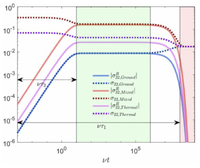Publication Date: June 27, 2024
Authors: Nicholas Anto-Sztrikacs, Harry J. D. Miller, Ahsan Nazir, and Dvira Segal
Abstract:
We introduce prethermal temperature probes for sensitive, fast, and robust temperature estimation. While equilibrium thermal probes with a manifold of quasidegenerate excited states have been previously recognized for their maximal sensitivity, they suffer from long thermalization timescales. When considering time as a critical resource in thermometry, it becomes evident that these equilibrium probes fall short of ideal performance. Here, we propose a different paradigm for thermometry, where setups originally suggested for optimal equilibrium thermometry should instead be employed as prethermal probes, by making use of their long-lived quasiequilibrium state. This transient state emerges from the buildup of quantum coherences among quasidegenerate levels. For a class of physically motivated initial conditions, we find that energy measurements of the prethermal state exhibit a similar sensitivity as the equilibrium state. However, they offer the distinct benefit of orders of magnitude reduction in the time required for the estimation protocol. Upon introducing a figure of merit that accounts for the estimation protocol time, prethermal probes surpass the corresponding equilibrium probes in terms of effective thermal sensitivity, opening avenues for rapid thermometry by harnessing the long-lived prethermal states.
Related links:

